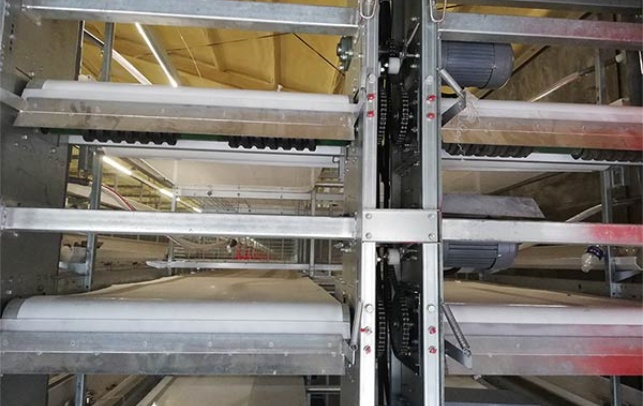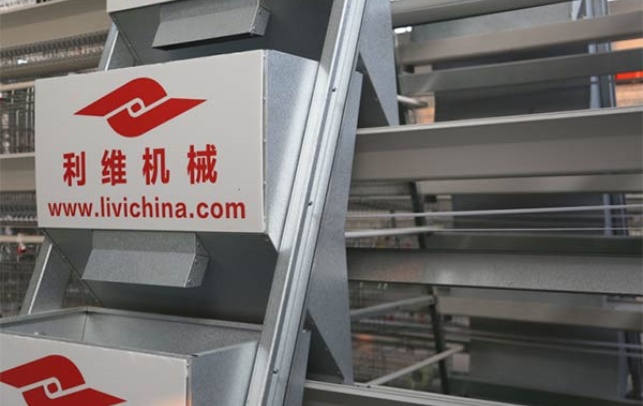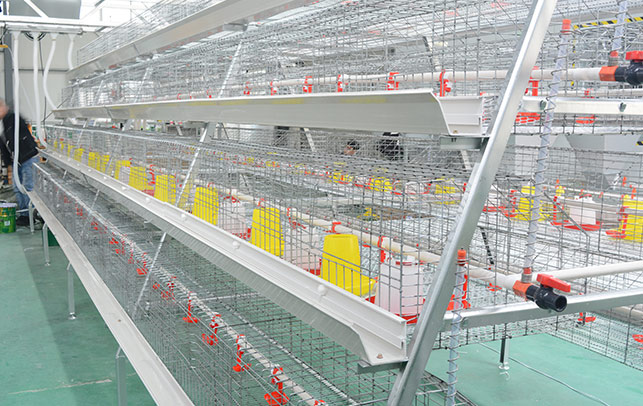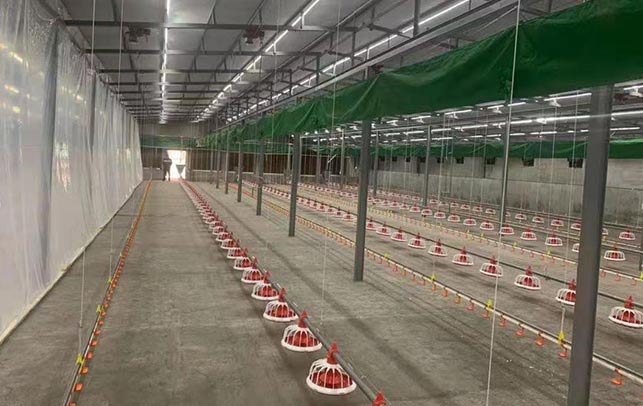How to Set Up Chicken Cages: Chicken Cage Maintenance
Time : 2024-06-03
Setting up chicken cages is an essential aspect of poultry farming, as it provides a safe and controlled environment for the birds. Proper cage setup ensures the well-being of the chickens, facilitates efficient management, and contributes to optimal production. In this comprehensive guide, we will explore the steps involved in setting up chicken cages and discuss essential maintenance practices to keep the cages clean, comfortable, and conducive to the health of your flock.
Setting Up Chicken Cages
1. Determine Cage Size and Design
The first step in setting up chicken cages is to determine the appropriate size and design for your flock. Consider the breed, age, and number of chickens you plan to house in each cage. Ensure that the cages provide enough space for the birds to move, perch, and access feeders and waterers comfortably. The design should also allow for easy cleaning and waste removal.
2. Prepare the Cage Area
Before installing the cages, prepare the designated area properly. Clear any debris, level the ground, and ensure proper drainage to prevent waterlogging. Adequate ventilation is crucial, so consider the placement of the cages in a well-ventilated area that allows for good air circulation.
3. Install the Cages
Follow the manufacturer’s instructions to assemble and install the chicken cages. Ensure that the cages are securely anchored to prevent tipping or collapsing. Double-check that all doors, latches, and fasteners are in good working condition. It’s important to provide a secure and stable environment for the chickens.
4. Bedding Material
Line the bottom of the cages with suitable bedding material. Common options include wood shavings, straw, or shredded paper. The bedding material helps absorb moisture, provides insulation, and offers a comfortable surface for the chickens to rest on. Regularly monitor and replace the bedding as needed to maintain cleanliness and prevent the buildup of ammonia.
5. Feeders and Waterers
Install appropriate feeders and waterers within the cages. Ensure that they are easily accessible to the chickens and positioned at an appropriate height. Regularly clean and sanitize the feeders and waterers to prevent the growth of bacteria and ensure a constant supply of fresh food and water.
6. Nesting Boxes
If you plan to keep laying hens, provide nesting boxes within the cage setup. Nesting boxes should be dark, quiet, and secluded to encourage egg-laying. Place clean bedding material, such as straw or wood shavings, inside the nesting boxes to create a comfortable and inviting space for the hens to lay their eggs.
7. Lighting
Consider the lighting requirements for your chickens. Adequate lighting is essential for their well-being and productivity. Provide a light source that mimics natural daylight, ensuring a consistent light-dark cycle. Consult with experts or refer to breed-specific guidelines to determine the appropriate lighting duration and intensity for your flock.
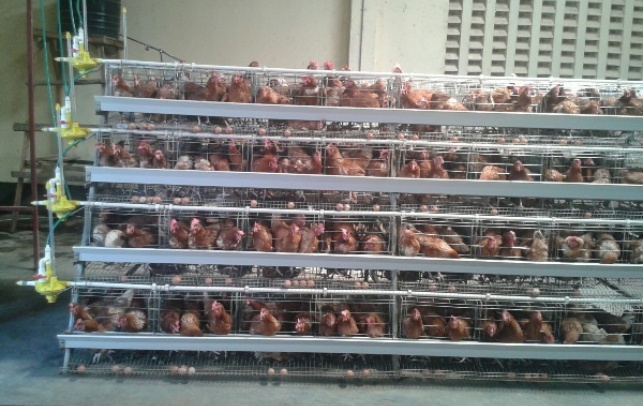
Chicken Cage Maintenance
Maintaining clean and hygienic chicken cages is crucial for the health and productivity of your flock. Regular maintenance practices help prevent the spread of diseases, minimize stress, and create a comfortable living environment for the chickens. Here are some essential maintenance tasks to incorporate into your routine:
1. Daily Cleaning
Perform daily cleaning tasks to remove droppings, spilled feed, and other debris from the cages. Use a rake or shovel to collect the waste material and dispose of it properly. Regularly inspect the cages for any signs of damage or wear and repair or replace as necessary.
2. Weekly Deep Cleaning
On a weekly basis, perform a more thorough cleaning of the chicken cages. Remove all chickens from the cages and empty them of bedding material. Use a mild detergent or disinfectant solution to clean the cages thoroughly, paying special attention to corners, crevices, and hard-to-reach areas. Rinse the cages with clean water and allow them to dry before adding fresh bedding material.
3. Pest Control
Implement effective pest control measures to prevent infestations. Regularly inspect the cages for signs of pests such as mites, lice, or rodents. Use appropriate pest control methods, such as insecticides or traps, to eliminate pests and protect the health of your flock. Consult with professionals or follow recommended guidelines to ensure safe and effective pest control practices.
4. Ventilation and Air Quality
Maintain proper ventilation in the chicken cages to ensure good air quality. Adequate airflow helps remove excess moisture, ammonia, and odors, reducing the risk of respiratory issues among the chickens. Regularly check ventilation systems, fans, and vents to ensure they are functioning properly. Clean or replace air filters as needed to maintain optimal air quality.
5. Water and Feed Management
Regularly clean and sanitize the feeders and waterers to prevent contamination and the growth of bacteria. Remove any leftover feed or debris from the feeders and replenish with fresh feed. Clean and refill the waterers daily, ensuring a constant supply of clean and fresh water for the chickens.
6. Health Monitoring
Regularly monitor the health of your flock. Observe the chickens for any signs of illness, abnormal behavior, or distress. Promptly address any health issues by consulting with a veterinarian or poultry health professional. Isolate sick birds to prevent the spread of diseases and provide appropriate treatment as recommended.
7. Record Keeping
Maintain detailed records of your chicken cage maintenance activities. Keep track of cleaning schedules, pest control measures, health observations, and any other relevant information. This record-keeping helps identify patterns, track improvements, and ensure that maintenance tasks are performed consistently.
Conclusion
Setting up chicken cages and implementing proper maintenance practices are essential for successful poultry farming. By following the steps outlined in this guide, you can create a safe, clean, and comfortable environment for your chickens. Regular maintenance tasks, such as cleaning, pest control, and health monitoring, contribute to the overall well-being and productivity of your flock. Remember, a well-maintained chicken cage is the foundation for a thriving poultry operation.






